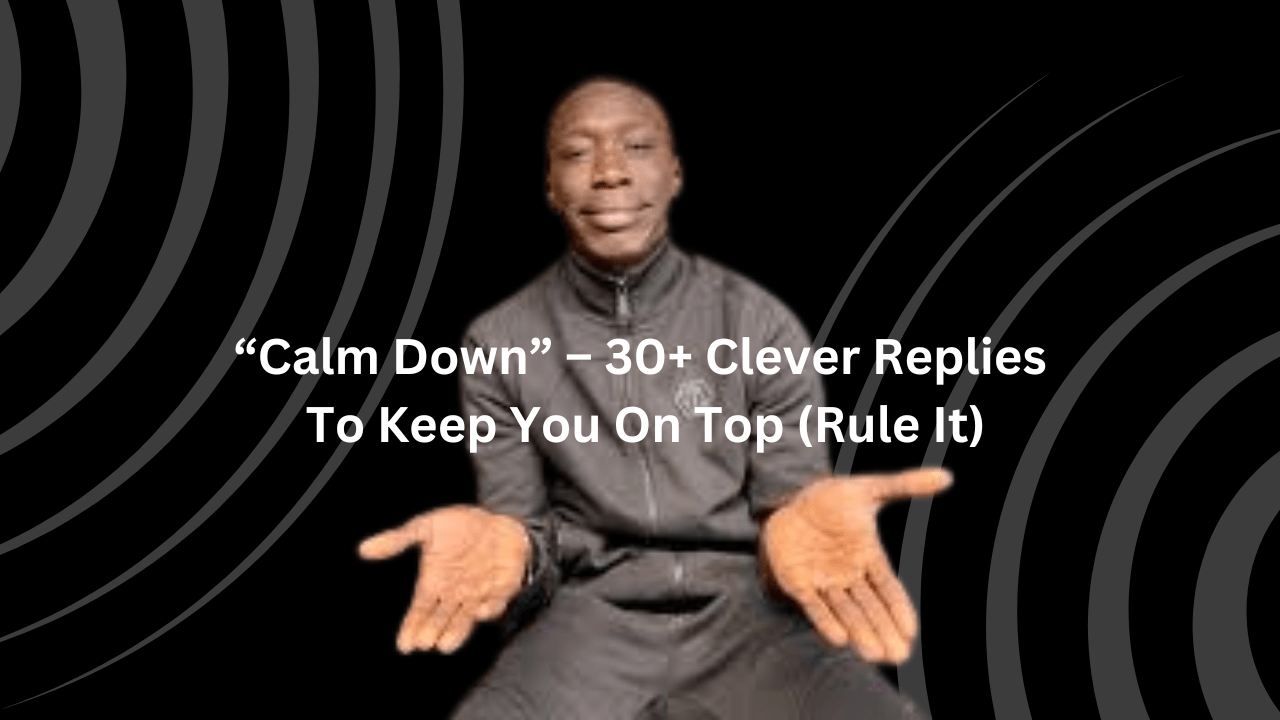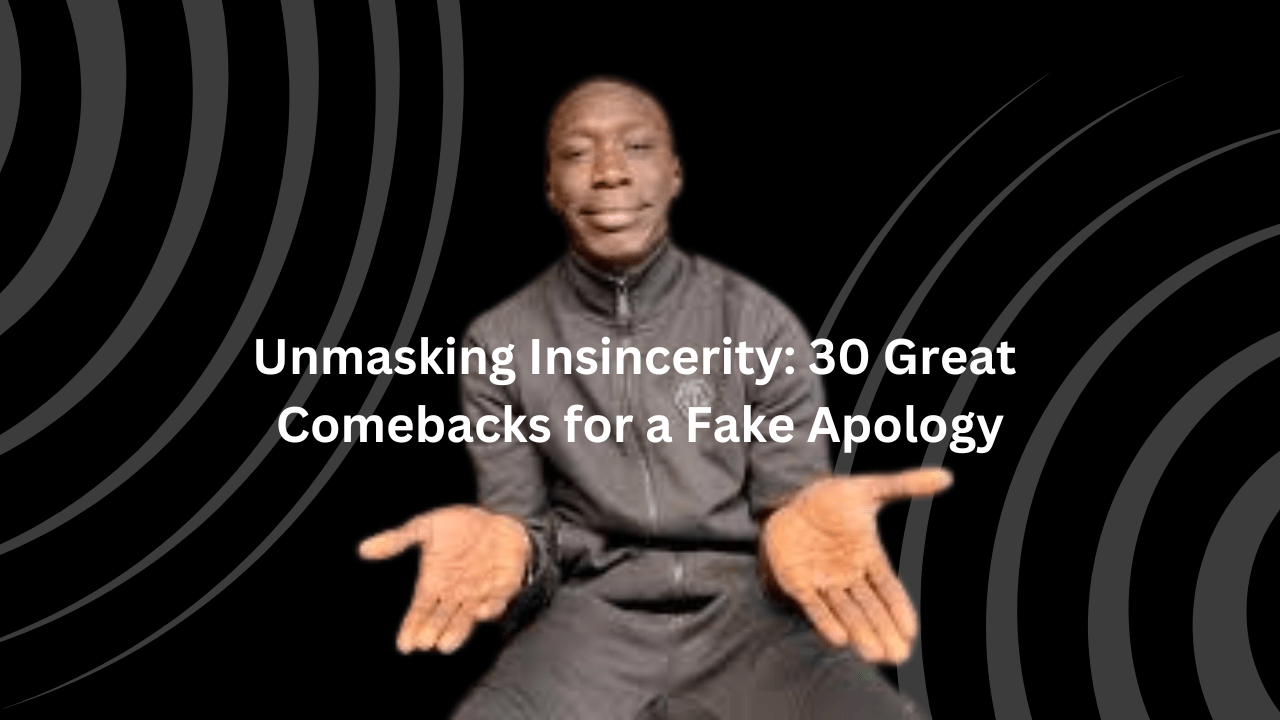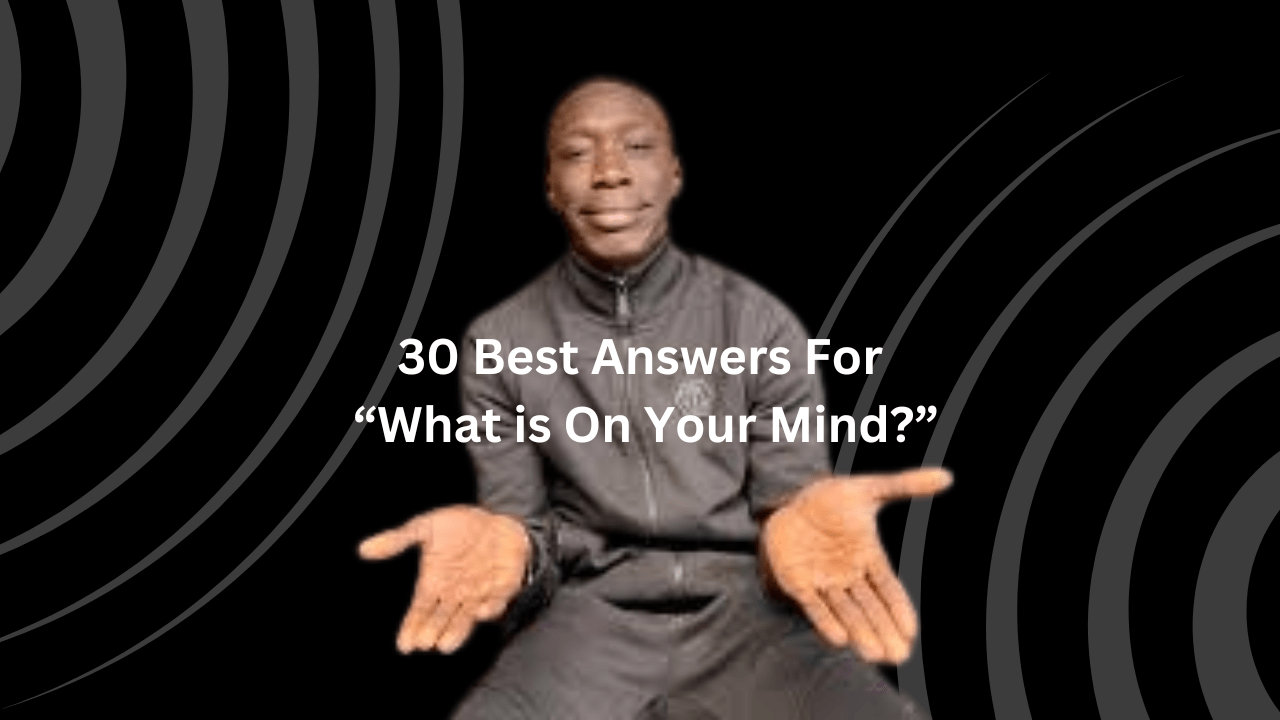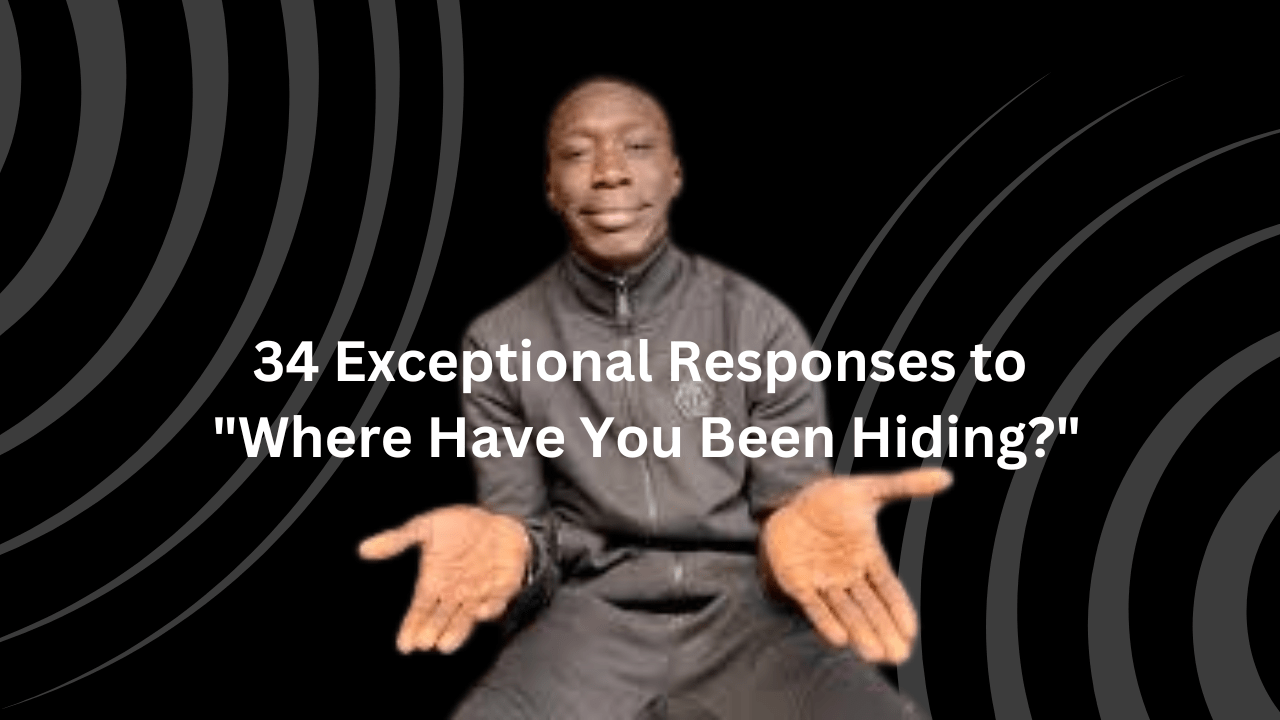In the heat of a conversation, few phrases can be as frustrating and dismissive as “Calm down.” Whether uttered with good intentions or as a means to assert control, this phrase often has the opposite effect, eliciting frustration and exacerbating tensions. In this article, we delve into the art of assertive communication by providing over 30+ clever replies to “Calm Down,” empowering you to maintain composure and assertiveness in any situation.
Understanding the Phrase “Calm Down”:

The phrase “Calm down” is often used in moments of heightened emotion or conflict, but its impact can be dismissive or condescending. Being told to calm down can invalidate one’s feelings or diminish the legitimacy of their concerns, leading to further frustration or anger. It’s important to recognize the potential harm of this phrase and respond assertively to maintain control of the conversation.
Quick Tips for Responding Assertively:

Before diving into the clever replies, it’s essential to remember a few key tips for responding assertively:
Stay composed and maintain a calm demeanor, even in the face of frustration.
Assert your boundaries assertively but respectfully, making it clear that dismissive remarks are not acceptable.
Use humor strategically to disarm the situation and maintain control of the conversation, while still asserting your position.
Here are over 30 clever responses to “Calm Down” that can help you maintain composure and assertiveness in any situation:

“I’m as calm as a cucumber on a yoga mat.”
This response uses humor to convey the speaker’s calmness in a playful and light-hearted manner. The comparison to a cucumber on a yoga mat creates a vivid image of serenity and composure.
“I’ll consider calming down once you stop pushing my buttons.”
By asserting that their emotional state is a response to the actions of the other person, this comeback places responsibility on the individual who provoked the reaction. It communicates that the speaker’s emotions are valid reactions to external stimuli.
“If I were any more relaxed, I’d be horizontal.”
This response employs humor to emphasize the speaker’s level of relaxation, suggesting that they are already incredibly calm. The imagery of being horizontal reinforces the idea of complete relaxation.
“Thanks for the advice, but I’ll manage my emotions just fine.”
This comeback acknowledges the attempted advice to calm down while asserting the speaker’s confidence in their ability to manage their own emotions. It communicates self-assurance and independence.
“Interesting tactic. Do you also tell fires to stop burning?”
This response uses sarcasm to highlight the absurdity of telling someone to calm down in the midst of a heated situation. The comparison to telling fires to stop burning underscores the futility of the suggestion.
“Calm down? Oh, I wasn’t aware I was a volcano.”
By humorously comparing themselves to a volcano, this comeback highlights the idea that their emotions are natural and valid reactions to the situation. It communicates a sense of self-awareness and playfulness.
“I’ll calm down when the situation warrants it, not when you demand it.”
This response asserts the speaker’s autonomy and the right to experience emotions on their own terms. It communicates that their emotional state is determined by the circumstances, not by external demands.
“How about we focus on resolving the issue instead of telling me how to feel?”
By redirecting the conversation to the underlying issue, this comeback emphasizes the importance of addressing the root cause of the conflict rather than focusing on the speaker’s emotional state. It encourages constructive dialogue and problem-solving.
“I’ll take your advice into consideration once pigs start flying.”
This response uses humor and hyperbole to dismiss the suggestion to calm down as unrealistic or absurd. The imagery of pigs flying adds a whimsical touch to the comeback.
“I’m calm. I’m just passionately expressing my point of view.”
This response asserts the speaker’s emotional state as passionate rather than agitated. It communicates that their intensity is driven by conviction rather than anger, encouraging the other person to listen to their perspective.
“Your concern for my emotional state is duly noted. Now, back to the matter at hand.”
This response acknowledges the other person’s attempt to address the speaker’s emotional state while redirecting the conversation back to the main topic. It communicates that the speaker is focused on resolving the issue at hand.
“Calm down? How about you address the root cause of the problem instead?”
By shifting the focus to the underlying cause of the conflict, this comeback challenges the notion that calming down is the solution. It encourages the other person to engage in problem-solving rather than dismissing the speaker’s emotions.
“I’m as cool as a cucumber in a snowstorm.”
This response uses humor to convey the speaker’s calmness in an exaggerated and playful manner. The juxtaposition of a cucumber in a snowstorm creates a vivid image of composure in the face of adversity.
“If calming down were that easy, I’d be a zen master by now.”
By humorously acknowledging the difficulty of calming down, this comeback highlights the complexity of managing emotions. It communicates empathy for the speaker’s struggle while maintaining a light-hearted tone.
“Calm down? Sure, right after you stop provoking me.”
This response asserts that the other person’s actions are contributing to the speaker’s emotional state. It communicates a desire for the other person to take responsibility for their role in the conflict.
“I appreciate your concern, but I’ve got this under control.”
This response acknowledges the other person’s attempt to offer advice while asserting the speaker’s confidence in their ability to manage their own emotions. It communicates self-assurance and assertiveness.
“I’ll calm down when I feel like it, not when you demand it.”
By asserting their autonomy and right to experience emotions on their own terms, this comeback challenges the other person’s attempt to dictate the speaker’s emotional state. It communicates a refusal to be controlled or manipulated.
“Telling me to calm down won’t magically resolve the issue at hand.”
This response emphasizes the importance of addressing the underlying issue rather than focusing on the speaker’s emotional state. It communicates a desire for constructive dialogue and problem-solving.
“My emotional state is not up for debate. Let’s focus on finding a solution.”
By asserting that their emotional state is not open to negotiation, this comeback sets a boundary and redirects the conversation to the main topic. It communicates a refusal to be sidetracked by dismissive remarks.
“Calm down? Thanks, but I’ll stick with expressing myself assertively.”
This response acknowledges the other person’s suggestion to calm down while asserting the speaker’s preferred mode of communication. It communicates a commitment to assertiveness and self-expression.
“Calm down? How about we address the issue instead of dismissing my feelings?”
By challenging the other person’s attempt to dismiss their emotions, this comeback emphasizes the importance of validating feelings and addressing underlying concerns. It communicates a desire for empathy and understanding.
“I’m calm. I’m just passionate about this topic.”
This response clarifies the speaker’s emotional state as passionate rather than agitated. It communicates that their intensity is driven by conviction and enthusiasm, encouraging the other person to listen to their perspective.
“Telling me to calm down won’t change the fact that there’s a problem to be solved.”
This response emphasizes the importance of addressing the underlying issue rather than focusing on the speaker’s emotional state. It communicates a desire for constructive dialogue and problem-solving.
“I’ll calm down once I feel heard and respected.”
By linking their emotional state to feeling heard and respected, this comeback communicates the importance of validation and empathy. It encourages the other person to listen attentively and respond respectfully.
“Calm down? Sure, right after you stop patronizing me.”
This response challenges the other person’s condescending tone and asserts the speaker’s desire for respectful communication. It communicates a refusal to be belittled or patronized.
“I’m calm. I’m just expressing myself assertively.”
This response clarifies the speaker’s emotional state as assertive rather than aggressive. It communicates a commitment to clear and direct communication while maintaining composure.
“If calming down were that easy, we wouldn’t be having this conversation.”
By acknowledging the difficulty of calming down, this comeback highlights the complexity of managing emotions in tense situations. It communicates empathy for the speaker’s struggle while asserting the importance of addressing the underlying issue.
“I appreciate your concern, but I’m perfectly capable of managing my emotions.”
This response acknowledges the other person’s attempt to offer advice while asserting the speaker’s confidence in their ability to regulate their own emotions. It communicates self-assurance and independence.
“Calm down? How about we focus on finding a solution instead of assigning blame?”
By redirecting the conversation to problem-solving rather than blame-shifting, this comeback emphasizes the importance of constructive dialogue. It communicates a desire for collaboration and mutual respect.
“I’m calm. I’m just not willing to be silenced.”
This response asserts the speaker’s emotional state as calm and composed while emphasizing their refusal to be silenced or dismissed. It communicates a commitment to assertiveness and self-expression.
“Calm down? Let’s focus on finding a solution instead of dwelling on emotions.”
By redirecting the conversation towards problem-solving and away from emotional reactions, this comeback emphasizes the importance of constructive dialogue. It communicates a willingness to address the issue at hand rather than getting caught up in emotions.
“Telling me to calm down won’t change the fact that there’s a problem we need to address.”
This response acknowledges the existence of a problem that needs resolution while asserting that simply being told to calm down won’t solve it. It communicates a desire to move past the dismissal and focus on finding a solution.
“I’m calm. I’m just not willing to be patronized.”
By asserting their calm demeanor while rejecting patronizing behavior, this comeback sets a boundary and communicates a refusal to be treated condescendingly. It emphasizes the importance of respectful communication.
“Calm down? How about we take a step back and approach this calmly together?”
This response suggests a collaborative approach to addressing the situation, emphasizing the importance of working together to find a resolution. It communicates a willingness to engage in constructive dialogue while maintaining composure.
“I appreciate your concern, but I don’t appreciate being dismissed.”
By acknowledging the other person’s attempt to offer advice while expressing discontent with being dismissed, this comeback communicates a desire for validation and respect. It emphasizes the importance of being heard and understood.
“Calm down? Maybe once we address the underlying issues causing this tension.”
This response suggests addressing the root cause of the tension rather than simply trying to calm down. It emphasizes the importance of understanding and resolving underlying issues for effective conflict resolution.
“I’m calm. I just don’t appreciate being told how to feel.”
By asserting their calm demeanor while expressing dissatisfaction with being told how to feel, this comeback sets a boundary and communicates a refusal to be controlled or manipulated. It emphasizes the importance of autonomy and self-expression.
“Calm down? Let’s approach this situation with understanding and empathy.”
This response suggests a compassionate approach to addressing the situation, emphasizing the importance of empathy and understanding. It communicates a desire to foster mutual respect and collaboration.
“I’ll calm down once I feel like my concerns are being taken seriously.”
By linking their emotional state to the validation of their concerns, this comeback emphasizes the importance of being heard and understood. It communicates a desire for empathy and validation in communication.
“Calm down? How about we focus on finding common ground instead?”
This response suggests redirecting the conversation towards finding common ground and working towards a mutually beneficial solution. It emphasizes the importance of collaboration and compromise in communication.
Asserting Boundaries and Maintaining Assertiveness:
Responding assertively to dismissive remarks like “Calm Down” is essential for maintaining control of the conversation and ensuring that your feelings are heard and respected. By setting boundaries and asserting your position confidently, you can navigate difficult situations with grace and composure.
Keeping Your Cool in Difficult Situations:
In moments of conflict or tension, it can be challenging to maintain composure and respond assertively. However, by employing strategies for managing emotions and communicating assertively, you can navigate difficult situations with confidence and grace. Remember to prioritize respectful communication and self-advocacy, even in the face of adversity.
You may love this one: 20 Other Ways To Say “No Hard Feelings”
Conclusion:
Assertive communication is a powerful tool for maintaining control of the conversation and ensuring that your feelings are heard and respected. By responding assertively to dismissive remarks like “Calm Down,” you can assert your boundaries, maintain composure, and navigate difficult situations with confidence and grace. So, the next time you’re told to “Calm Down,” consider using one of these clever replies to keep yourself on top and rule the conversation.









